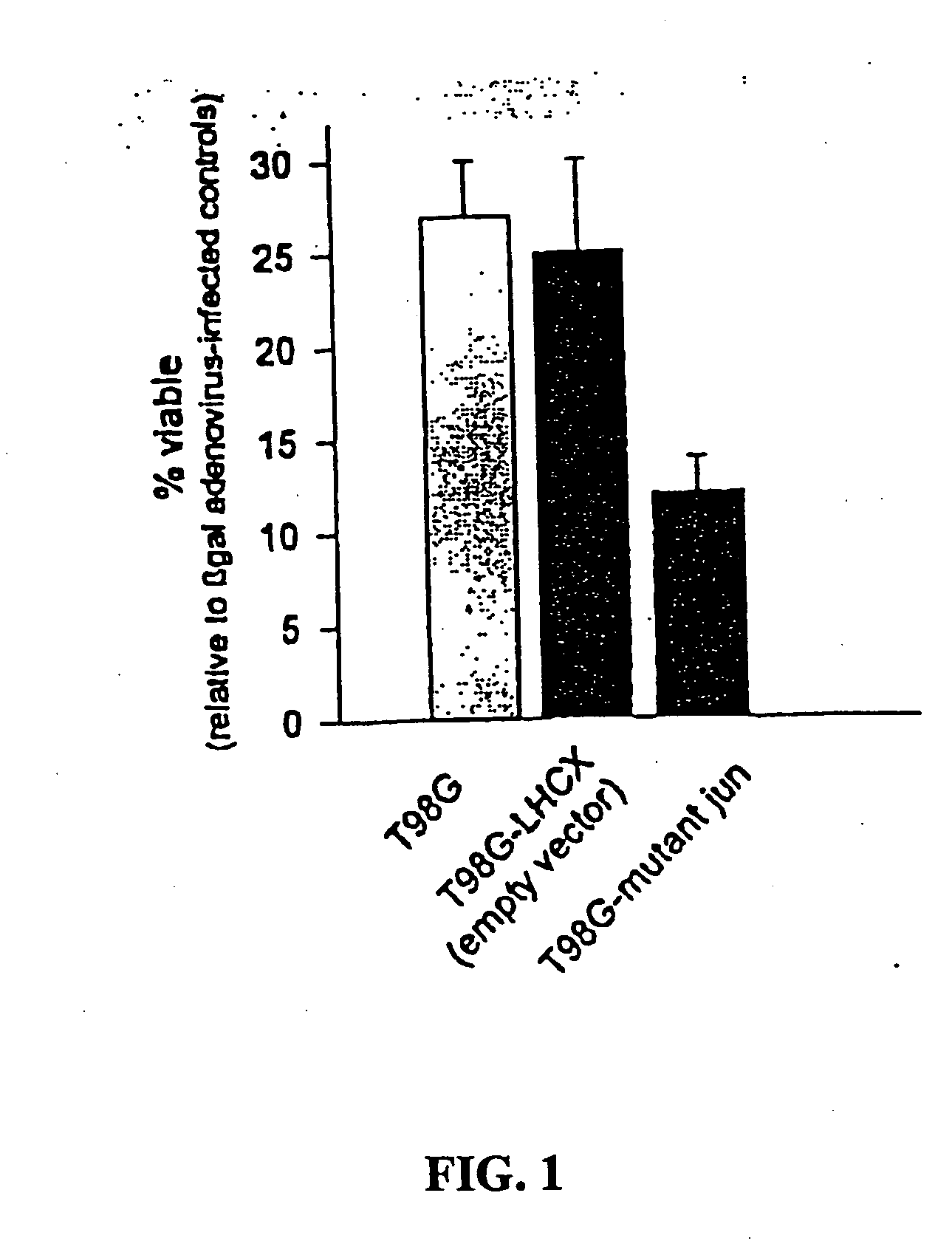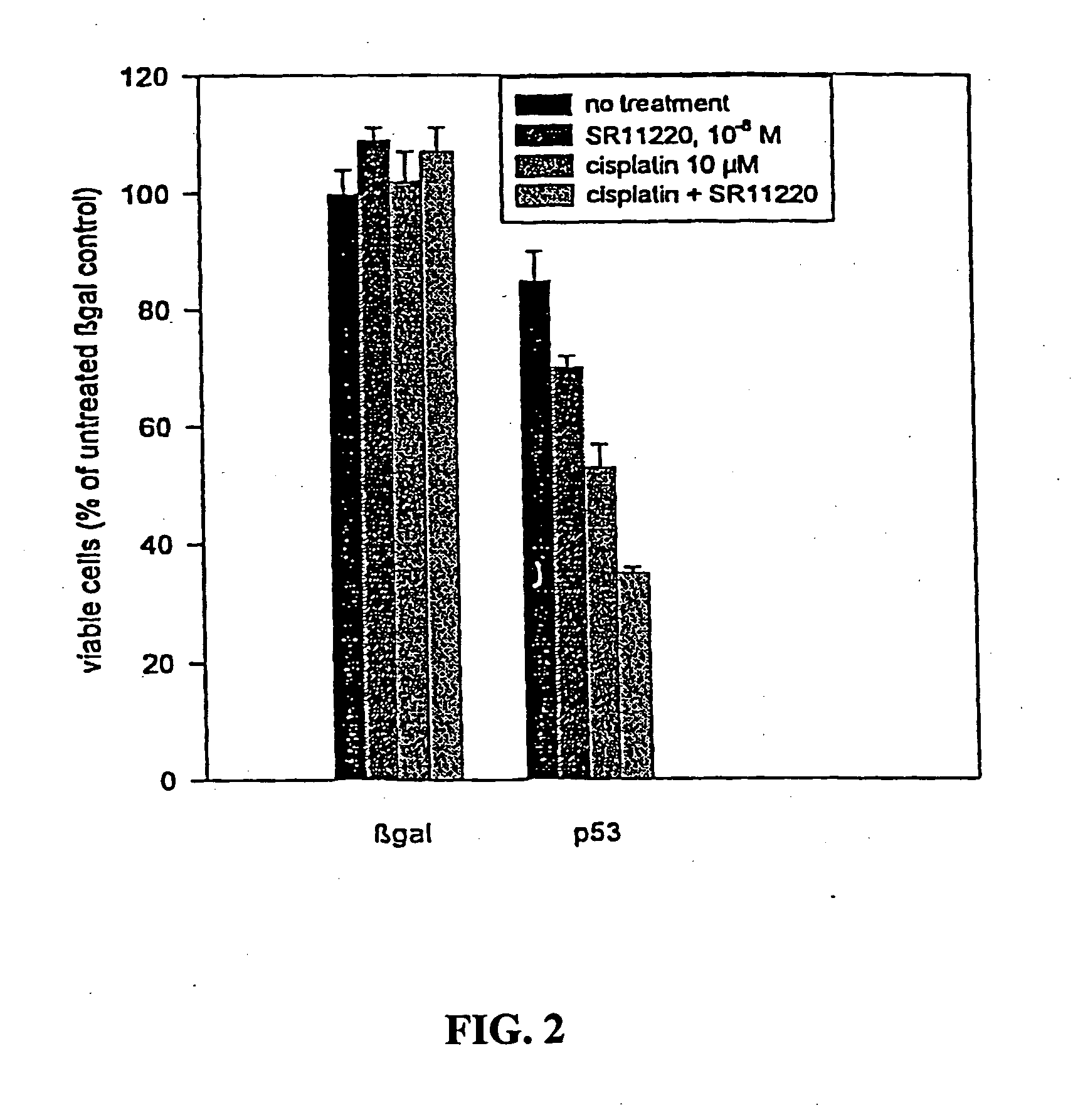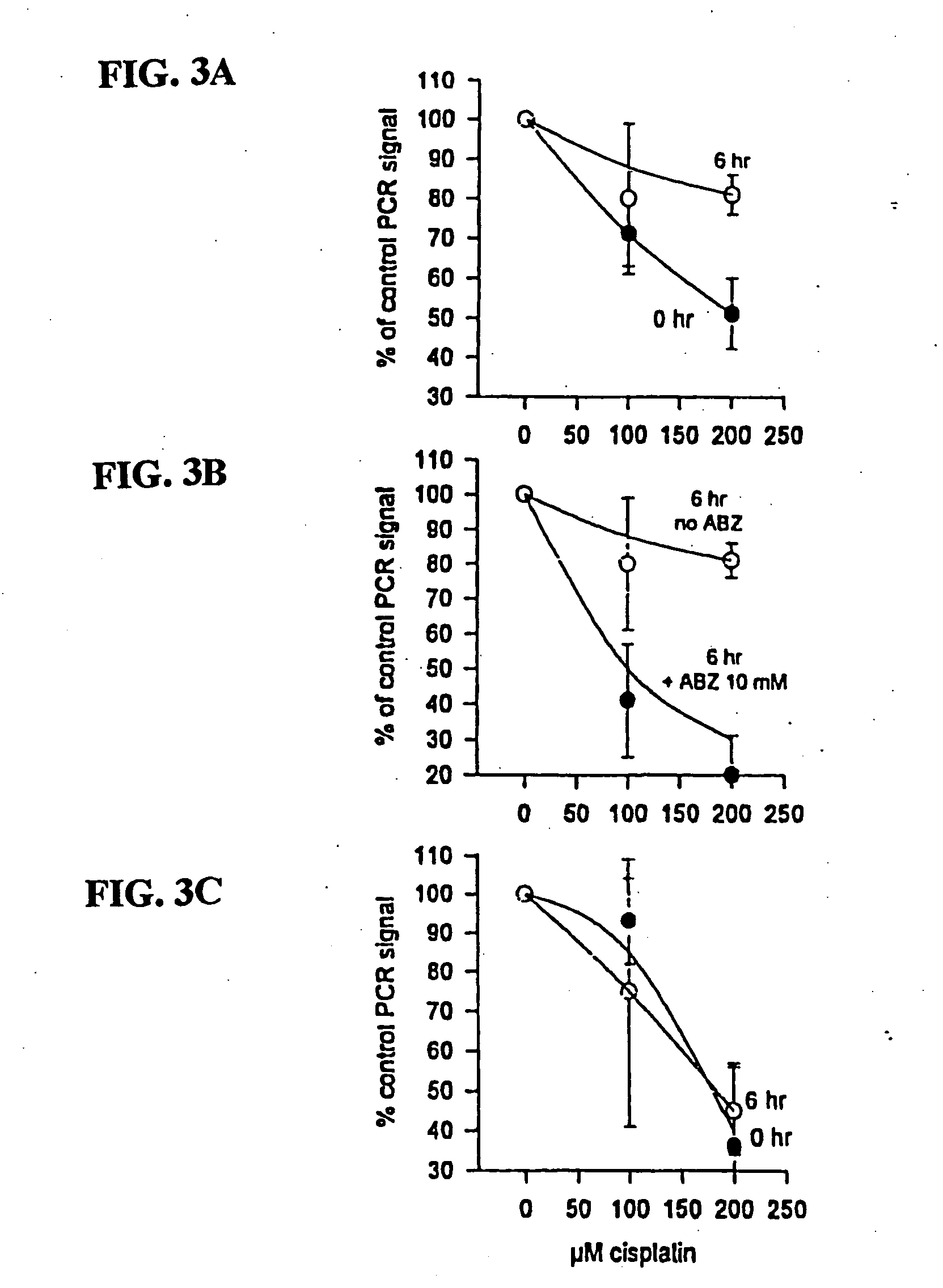Down-regulation of DNA repair to enhance sensitivity to p53-mediated suppression
a sensitivity and dna repair technology, applied in the field of cancer therapy, can solve the problems of major obstacles to cancer treatment, major obstacles to the development of resistance to such treatment, and half a million deaths per year, and achieve the effect of facilitating the function of the tumor suppressor, p53, and overcoming or restricting the therapy-inhibiting effect of dna repair
- Summary
- Abstract
- Description
- Claims
- Application Information
AI Technical Summary
Benefits of technology
Problems solved by technology
Method used
Image
Examples
example i
Materials and Methods
Cell Lines and Tissue Culture
[0175] T98G glioblastoma cells were obtained from ATCC and cultured at 37° C. 10% CO2 in Dulbecco's Modified Eagles Medium supplemented with 10% newborn calf serum. 9L rat glioblastoma cells were obtained from Carol Cruse (University of Colorado) and cultured at 37° C. in 10% CO2 in Dulbecco's Modified Eagles Medium supplemented with 10% fetal Calf serum. The T98G-LHCmjun clone (termed T98G mutant jun or T98G-mjun), as well as control empty vector modified clone (termed T98GLHCX) were obtained from Dr. Dan Mercola (Sidney Kimmel Cancer Center) and were cultured in the same way as were T98G cells except that 100 μg / ml hygromycin was added to the culture medium. The 98G-mjun is stably modified to express a dominant negative mutant of c-jun (the mutant was obtained by site-directed mutagenesis by M. Karin and colleagues and is described by Smeal et al. (1991). Mutant jun has ser→ala substitutions at positions 63 and 73, two sites of ...
example ii
The Effects of DNA Repair Inhibition on the Growth of Cancer Cells
[0185] The effects of DNA repair inhibition on the growth of two different types of cancer cells with varying status in wild-type p53 expression were tested.
[0186] In the first instance, the following three cell lines were tested: T98G, parental cell line; T98GLHXC, empty vector modified control; T98G-mutant jun, containing jun mutated at positions 63 and 73 from serine to alanine. The cells were infected with wild-type p53-expressing virus and the growth of the cells was measured after seven days (FIG. 1). The T98G-mutant jun cells had a significantly reduced viability compared to the T98G parental cells and the T98GLHXN empty vector control cells. Viability of the p53 adenovirus infected clones was measured relative to the viability of βgal adenovirus-infected control cells for each subclone.
[0187] The transcriptional activation of some DNA repair enzymes are controlled by the transcription factor AP-1, which is ...
example iii
The Combined Effects of DNA Damaging
Agents and DNA Repair Inhibitors on Tumor Cells
[0189] The effects of cisplatin alone and in combination with a synthetic retinoid SR11220 on tumor cells expressing wild-type p53 were tested.
[0190] In the first instance, viability of 9L rat glioblastoma cells infected with either βgal adenovirus or p53 adenovirus, and treated one day later in the absence or presence of 50 μM cisplatin was measured seven days after administration of cisplatin (FIG. 5). 9L rat glioblastoma cells infected with p53 adenovirus exhibited a significant decrease in viability compared to 9L cells infected with βgal adenovirus when exposed to cisplatin. The viability of 9L rat glioblastoma cells infected with either βgal adenovirus or p53 adenovirus in the absence of cisplatin did not significantly decrease. Thus tumor cells that have sustained DNA damage are more susceptible to growth suppression by p53.
[0191] In the second instance, T47D breast cancer cells were infect...
PUM
| Property | Measurement | Unit |
|---|---|---|
| mean survival time | aaaaa | aaaaa |
| molecular weight | aaaaa | aaaaa |
| temperatures | aaaaa | aaaaa |
Abstract
Description
Claims
Application Information
 Login to View More
Login to View More - R&D
- Intellectual Property
- Life Sciences
- Materials
- Tech Scout
- Unparalleled Data Quality
- Higher Quality Content
- 60% Fewer Hallucinations
Browse by: Latest US Patents, China's latest patents, Technical Efficacy Thesaurus, Application Domain, Technology Topic, Popular Technical Reports.
© 2025 PatSnap. All rights reserved.Legal|Privacy policy|Modern Slavery Act Transparency Statement|Sitemap|About US| Contact US: help@patsnap.com



